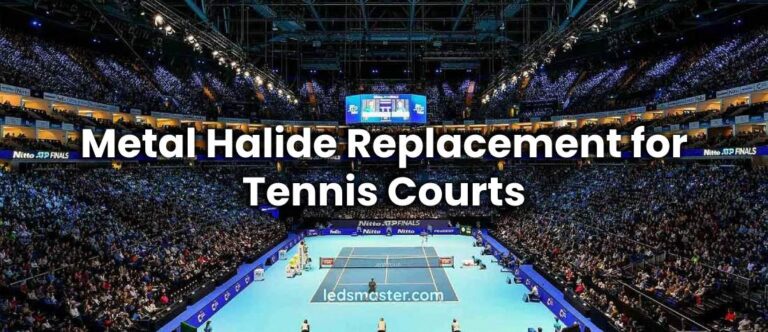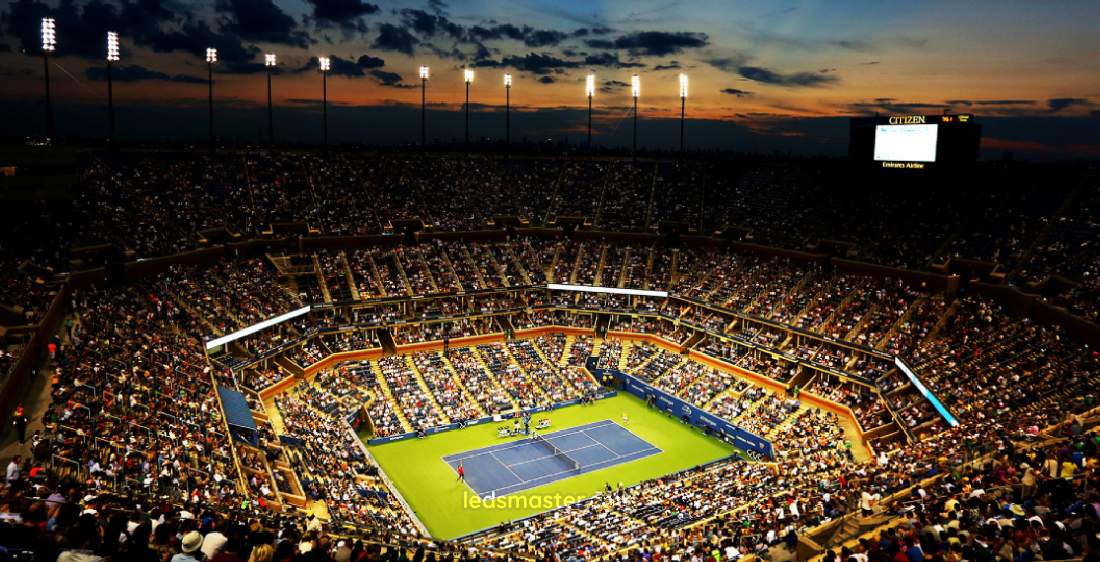
Whether you’re looking to replace outdated traditional lights or upgrade your entire lighting system, our expert services ensure enhanced visibility and energy efficiency on the court. Discover how we can transform your tennis court while saving you money in the long run!
Get your complimentary lighting design today
By switching from traditional lights to cutting-edge technology, you’ll enjoy brighter, more consistent illumination that enhances gameplay and safety. Our expert services make it easy to replace outdated systems or upgrade your entire lighting setup, all while significantly reducing energy costs. Don’t miss out on the chance to elevate your tennis experience and save money.
Over time, traditional lighting sources like Metal Halide (MH) and High-Pressure Sodium (HPS) fixtures have been widely used but are gradually being replaced with more efficient and cost-effective alternatives. This article explores the process and considerations involved in replacing MH and HPS fixtures with modern lighting solutions.
Table of Contents
ToggleMetal Halide and HPS fixtures have been fixtures in tennis court lighting due to their ability to provide high-intensity illumination over large areas. Metal Halide lamps typically range from 400 to 1000 watts, offering bright light with a color temperature around 4000K, which is suitable for outdoor sports. On the other hand, High-Pressure Sodium lamps, ranging from 250 to 1000 watts, emit a warmer yellow light around 2000K, which can affect color rendition but offers high efficiency and longevity.

Despite their effectiveness, MH and HPS fixtures have notable drawbacks that warrant replacement. These include high energy consumption, longer warm-up times, and maintenance costs associated with bulb replacements and ballasts. Moreover, advancements in LED technology now offer superior performance in terms of energy efficiency, light quality, and durability, making them the preferred choice for tennis court lighting upgrades.
LED (Light Emitting Diode) technology has revolutionized sports lighting due to its energy efficiency and longevity. LEDs consume significantly less power than MH and HPS lamps while providing comparable or even better light output. For instance, a 1000-watt Metal Halide fixture can be effectively replaced by a 400-watt LED fixture, resulting in substantial energy savings without compromising on illumination quality. LEDs also have instant start capabilities, eliminating the warm-up time associated with traditional lamps.
When planning to replace Metal Halide (MH) and High-Pressure Sodium (HPS) fixtures with LEDs on tennis courts, several critical factors should be carefully evaluated to ensure optimal performance and cost-effectiveness:
Assessing the specific lux (illumination level) requirements is paramount when upgrading tennis court lighting. Compliance with international standards and local regulations ensures adequate visibility for players, enhancing their performance and safety. LED fixtures should be selected based on their ability to meet or exceed these requirements, providing consistent and reliable illumination throughout the playing area.
Consideration of the beam angle and distribution pattern of LED fixtures is crucial for achieving uniform lighting across the tennis court surface. Proper distribution minimizes glare and shadows, creating a well-lit environment that enhances visibility during matches. This not only improves gameplay but also contributes to a more enjoyable experience for both players and spectators.
Choosing LEDs with an appropriate color temperature significantly impacts visual clarity and player comfort. LEDs with color temperatures ranging from 5000K to 6000K closely mimic daylight, optimizing color rendition and enhancing contrast for better visibility of the ball in motion. This reduces eye strain and improves overall gameplay quality, particularly in low-light conditions.
Given the outdoor exposure of tennis courts, selecting durable LED fixtures is essential. Look for fixtures with high Ingress Protection (IP) ratings, indicating resistance to dust, moisture, and other environmental factors. This ensures long-term reliability and minimizes maintenance requirements, reducing operational downtime and associated costs over the lifespan of the fixtures.
Calculating the energy savings and return on investment (ROI) provided by LED fixtures compared to MH and HPS lamps is critical for financial planning. LEDs consume significantly less energy while delivering comparable or superior light output, resulting in substantial operational cost savings. Additionally, the extended lifespan of LEDs—often exceeding 100,000 hours—significantly reduces replacement and maintenance costs, further enhancing the overall cost-effectiveness of the lighting upgrade.
When upgrading tennis court lighting from Metal Halide (MH) or High-Pressure Sodium (HPS) fixtures to LED technology, engaging experienced lighting contractors or electricians familiar with sports lighting installations is crucial. These professionals ensure meticulous attention to detail in every aspect of the installation process. They will strategically position LED fixtures to maximize light distribution and minimize glare, ensuring optimal visibility for players while maintaining spectator comfort.
Proper wiring is essential for the safe and efficient operation of LED fixtures. Professionals ensure that electrical connections are secure and comply with local codes and regulations. Accurate alignment of LED fixtures is critical for achieving uniform illumination across the tennis court surface. Professionals use precision tools and techniques to align fixtures according to photometric data and project requirements.
Before proceeding with the LED retrofitting process, it’s essential to verify the compatibility of existing mounting structures and electrical wiring with new LED fixtures. This step helps streamline the retrofitting process and minimizes additional costs.
Professionals assess the condition and load-bearing capacity of existing poles and mounting brackets. Reinforcement or replacement may be necessary to support LED fixtures, which can differ in weight and size compared to MH or HPS fixtures. They also ensure that the existing electrical infrastructure can accommodate the electrical requirements of LED fixtures, including voltage, phase, and current ratings. Upgrading wiring if necessary prevents potential issues such as voltage drops or circuit overloads.
Conducting a photometric analysis is essential to determine the optimal placement and number of LED fixtures needed for uniform lighting across the tennis court surface. This analysis involves using specialized software to simulate light distribution patterns from LED fixtures. Professionals consider factors such as beam angle, light intensity, and uniformity to minimize shadows and ensure consistent illumination.
Based on the photometric data, they identify strategic locations for LED fixture installation and adjust fixture heights and angles to achieve balanced lighting coverage. The analysis calculates the precise number of LED fixtures required to meet recommended lighting levels (lux) for tennis courts, ensuring compliance with international standards and enhancing playing conditions during matches.
Upgrading tennis court lighting from Metal Halide and High-Pressure Sodium fixtures to LED technology represents a significant improvement in efficiency, performance, and cost-effectiveness. By carefully evaluating lighting requirements, considering LED benefits, and following proper installation practices, tennis facilities can enhance playing conditions, reduce operational costs, and contribute to sustainable energy practices. Embracing LED technology ensures that tennis enthusiasts can enjoy optimal visibility and performance under well-lit conditions for years to come.